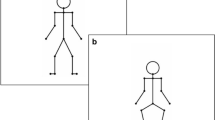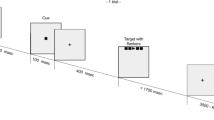Abstract
Music is capable of inducing emotional arousal. While previous studies used brief musical excerpts to induce one specific emotion, the current study aimed to identify the physiological correlates of continuous changes in subjective emotional states while listening to a complete music piece. A total of 19 participants listened to the first movement of Ludwig van Beethoven’s 5th symphony (duration: ~7.4 min), during which a continuous 76-channel EEG was recorded. In a second session, the subjects evaluated their emotional arousal during the listening. A fast fourier transform was performed and covariance maps of spectral power were computed in association with the subjective arousal ratings. Subjective arousal ratings had good inter-individual correlations. Covariance maps showed a right-frontal suppression of lower alpha-band activity during high arousal. The results indicate that music is a powerful arousal-modulating stimulus. The temporal dynamics of the piece are well suited for sequential analysis, and could be necessary in helping unfold the full emotional power of music.


Similar content being viewed by others
References
Aftanas LI, Golocheikine SA (2001) Human anterior and frontal midline theta and lower alpha reflect emotionally positive state and internalized attention: high-resolution EEG investigation of meditation. Neurosci Lett 310:57–60
Aftanas L, Varlamov AA, Pavlov SV, Makhnev VP, Reva NV (2002) Time-dependent cortical asymmetries induced by emotional arousal: EEG analysis of event-related synchronization and desynchronization in individually defined frequency bands. Int J Psychphysiol 44:67–82
Allen JJ, Coan JA, Nazarian M (2004) Issues and assumptions on the road from raw signals to metrics of frontal EEG asymmetry in emotion. Biol Psychol 67:183–218
Barry RJ, Clarke AR, Johnstone SJ, Magee CA, Rushby JA (2007) EEG differences between eyes-closed and eyes-open resting conditions. Clin Neurophysiol 118:2765–2773
Bigand E, Tillmann B, Poulin-Charronnat B (2006) A module for syntactic processing in music? Trends Cogn Sci 10(5):195–196
Blood AJ, Zatorre RJ (2001) Intensely pleasurable responses to music correlate with activity in brain regions implicated in reward and emotion. Proc Natl Acad Sci 20:11818–11823
Blood AJ, Zatorre RJ, Bermudez P, Evans AC (1999) Emotional responses to pleasant and unpleasant music correlate with activity in paralimbic brain regions. Nat Neurosci 2(4):382–387
Coan JA, Allan JJ (2004) Frontal EEG asymmetry as a moderator and mediator of emotion. Biol Psychol 67:7–49
Craig AD (2005) Forebrain emotional asymmetry: a neuroanatomical basis? Trends Cogn Sci 9:566–571
Davidson RJ (1995) Brain asymmetry. MIT Press, Cambridge
Davidson RJ (2004) What does the prefrontal cortex “do” in affect: perspectives on frontal EEG asymmetry research. Biol Psychol 67:219–233
Dellacherie D, Hugueville RL, Peretz I, Samson S (2010) The effect of musical experience on emotional self-reports and psychophysiological responses to dissonance. Psychophysiology 48(3):337–349
Delorme A, Sejnowski T, Makeig S (2007) Enhanced detection of artifacts in EEG data using higher-order statistics and independent component analysis. NeuroImage 34(4):1443–1449
Eldar E, Ganor O, Admon R, Bleich A, Hendler T (2007) Feeling the real world: limbic response to music depends on related content. Cereb Cortex 17(12):2828–2840
Flores-Gutierrez EO, Diaz JL, Barrios FA, Favila-Humara R, Guevara MA, del Rio-Portilla Y, Corsi-Cabrera M (2007) Metabolic and electric brain patterns during pleasant and unpleasant emotions induced by music masterpieces. Int J Psychophysiol 65:69–84
Frego R (1999) Effects of aural and visual conditions on response to perceived artistic tension in music and dance. J Res Music Edu 47:31–43
Gable PA, Harmon-Jones E (2009) Postauricular reflex responses to pictures varying in valence and arousal. Psychophysiology 46(3):487–490
Gosselin N, Samson S, Adolphs R, Noulhiane M, Roy M, Hasboun D, Baulac M, Peretz I (2006) Emotional responses to unpleasant music correlates with damage to the parahippocampal cortex. Brain J Neurol 129:2585–2592
Gosselin N, Peretz I, Johnsen E, Adolphs R (2007) Amygdala damage impairs emotion recognition from music. Neuropsychologia 45:236–244
Granot R, Eitian Z (2011) Musical tension and the interaction of dynamic auditory parameters. Music Percept 28(3):219–245
Hailstone JC, Omar R, Henley SM, Frost C, Kenward MG, Warren JD (2009) It’s not what you play, it’s how you play it: timbre affects perception of emotion in music. Q J Exp Psychol 62(11):1–15
Heller W, Nitschke JB, Lindsay DL (1997) Neuropsychological correlates of arousal in self-reported emotion. Cogn Emotion 11(4):383–402
Huron D (2001) Is music an evolutionary adaptation? Ann N Y Acad Sci 930:43–61
Huron D (2006) Sweet anticipation. MIT Press, Cambridge
Ilie G, Thompson W (2006) A comparison of the acoustic cues in music nd speech for three dimensions of affect. Music Percept 23:319–329
James CE, Britz J, Vuilleimier P, Hauert CA, Michel CM (2008) Early neuronal responses in right limbic structures mediate harmony incongruity processing in musical experts. Neuroimage 42(4):1597–1608
Jann K, Dierks T, Boesch C, Kottlow M, Strik W, Koenig T (2009) BOLD correlates of EEG alpha phase-locking and the fMRI default mode network. NeuroImage 45(3):903–916
Jann K, Kottlow M, Dierks T, Boesch C, Koenig T (2010) Topographic electrophysiological signatures of FMRI resting state networks. PLoS ONE 5(9):e12945
Juslin PN, Vastfjall D (2008) Emotional responses to music: the need to consider underlying mechanisms. Behav Brain Sci 31(5):559–621
Klimesch W (1999) EEG alpha and theta oscillations reflect cognitive and memory performance: a review and analysis. Brain Res Brain Res Rev 29(2–3):169–195
Klimesch W, Doppelmayr M, Russegger H, Pachinger T, Schwaiger J (1998) Induced alpha band power changes in the human EEG and attention. Neurosci Lett 244(2):73–76
Klimesch W, Doppelmayr M, Hanlsmayr S (2006) Upper alpha ERD absolute power: their meaning for memory performance. Prog Brain Res 159:151–165
Koelsch S (2005) Investigating emotion with music: neuroscientific approaches. Ann N Y Acad Sci 1060:412–418
Koelsch S (2009) A neuroscientific perspective on music therapy. Ann N Y Acad Sci 1169:374–384
Koelsch S, Fritz T, v. Cramon DY, Muller K, Friederici AD (2006) Investigating emotion with music: an fMRI study. Hum Brain Mapp 27(3):239–250
Koelsch S, Fritz T, Schlaug G (2008) Amygdala activity can be modulated by unexpected chord functions during music listening. NeuroReport 19(18):1815–1819
Koenig T, Melie-Garcia L (2010) A method to determine the presence of averaged event-related fields using randomization tests. Brain Topogr 23(3):233–242
Koenig T, Melie-Garcia L, Stein M, Strik W, Lehmann C (2008) Establishing correlations of scalp field maps with other experimental variables using covariance analysis and resampling methods. Clin Neurophysiol 119:1262–1270
Krause CM (2006) Cognition- and memory-related ERD/ERS responses in the auditory stimulus modality. Prog Brain Res 159:197–207
Krumhansl C (1995) Music psychology and music theory: problems and prospects. Music Theory Spectr 17(1):53–80
Krumhansl C (1997) An exploratory study of musical emotions and psychophysiology. Can J Exp Psychol 51(4):336–352
Krumhansl C (2003) Experimental strategies for understanding the role of experience in music cognition. Ann N Y Acad Sci 999:414–428
Lee KM, Skoe E, Kraus N, Ashley R (2009) Selective subcortical enhancement of musical intervals in musicians. J Neurosci 29(18):5832–5840
Madson AT, Silverman MJ (2010) The effect of music therapy on relaxation, anxiety, pain perception, and nausea in adult solid organ transplant patients. J Music Ther 47(3):220–232
Meadows ME, Kaplan RF (1994) Dissociation of autonomic and subjective responses to emotional slides in right hemisphere damaged patients. Neuropsychologia 32:847–856
Menon V, Levitin DJ (2005) The rewards of music listening: response and physiological connectivity of the mesolimbic system. NeuroImage 28(1):175–184
Meyer L (1956) Emotion and meaning in music. University of Chicago Press, Chicago
Moradipanah F, Mohammadi E, Mohammadil AZ (2009) Effect of music on anxiety, stress, and depression levels in patients undergoing coronary angiography. East Mediterr Health J 15(3):639–647
Muller TJ, Federspiel A, Fallgatter AJ, Strik WK (1999) EEG signs of vigilance fluctuations preceding perceptual flips in multistable illusionary motion. NeuroReport 10(16):3423–3427
Narmour E (1990) The analysis and cognition of basic melodic structures. University of Chicago Press, Chicago
Nitschke JB, Heller W, Palmieri PA, Miller GA (1999) Contrasting patterns of brain activity in anxious apprehension and anxious arousal. Psychophysiology 36:628–637
Ochsner KN, Ray RR, Hughes B, McRae K, Cooper JC, Weber J, Gabrieli JD, Gross JJ (2009) Bottom–up and top–down processes in emotion generation: common and distinct neural mechanisms. Psychol Sci 20:1322–1331
Panksepp J, Bernatzky G (2002) Emotional sounds and the brain: the neuro-affective foundations of musical appreciation. Behav Proc 60:133–155
Patel AD (2003) Language, music, syntax and the brain. Nat Neurosci 6(7):674–681
Pfurtscheller G (2006) The cortical activation model (CAM). Prog Brain Res 159:19–27
Russel J (1980) A circumplex model of affect. J Pers Soc Psychol 39(6):1161–1178
Salimpoor VN, Benovoy M, Longo G, Cooperstock JR, Zatorre RJ (2009) The rewarding aspects of music listening are related to degree of emotional arousal. PLoS ONE 4(10):e7487
Sammler D, Grigutsch M, Fritz T, Koelsch S (2007) Music and emotion: electrophysiological correlates of the processing of pleasant and unpleasant music. Psychophysiology 44(2):293–304
Sarter M, Givens B, Bruno JP (2001) The cognitive neuroscience of sustained attention: where top–down meets bottom–up. Brain Res Brain Res Rev 35:146–160
Scherer KR (1995) Expression of emotion in voice and music. J Voice 9(3):235–248
Schubert E (2004) Modeling perceived emotion with continuous musical features. Music Percept 21:561–585
Steinbeis N, Koelsch S, Sloboda JA (2006) The role of harmonic expectancy violations in musical emotions: evidence from subjective, physiological, and neural responses. J Cogn Neurosci 18:1380–1393
Suetsugi M, Mizuki Y, Ushijima I, Kobayashi T, Tsuchiya K, Aoki T (2000) Appearance of frontal midline theta activity in patients with generalized anxiety disorder. Neuropsychobiology 41:108–112
Tsang CD, Trainor LJ, Santesso DL, Tasker SL, Schmidt L, Aalto S (2001) Frontal EEG responses as a function of affective musical features. Ann N Y Acad Sci 930:439–442
Tsuno N, Shigeta M, Hyoki K, Faber PL, Lehmann D (2004) Fluctuations of source locations of EEG activity during transition from alertness to sleep in Alzheimer’s disease and vascular dementia. Neuropsychobiology 50(3):267–272
Wu D, Li C, Yin Y, Zhou C, Yao D (2010). Music composition from the brain signal: representing the mental state by music. Comput Intell Neurosci. doi:10.1155/2010/267671
Zare M, Ebrahimi AA, Birashk B (2010) The effects of music therapy on reducing agitation in patients with Alzheimer’s disease, a pre-post study. Int J Geriatr Psychiatry 25(12):1309–1310
Zendel BR, Alain C (2009) Concurrent sound segregation is enhanced in musicians. J Cogn Neurosci 21(8):1488–1498
Zentner M, Grandjean D, Scherer KR (2008) Emotions evoked by the sound of music: characterization, classification, and measurement. Emotion 8(4):494–521
Zhang J, Zhou R, Oei T (2011) The effects of valence and arousal on hemispheric asymmetry of emotion: evidence from event-related potentials. J Psychophysiol 25:95–103
Author information
Authors and Affiliations
Corresponding author
Rights and permissions
About this article
Cite this article
Mikutta, C., Altorfer, A., Strik, W. et al. Emotions, Arousal, and Frontal Alpha Rhythm Asymmetry During Beethoven’s 5th Symphony. Brain Topogr 25, 423–430 (2012). https://doi.org/10.1007/s10548-012-0227-0
Received:
Accepted:
Published:
Issue Date:
DOI: https://doi.org/10.1007/s10548-012-0227-0




